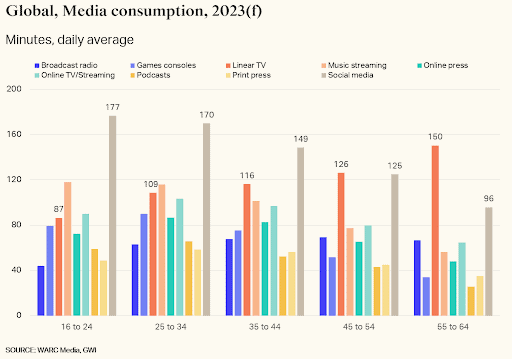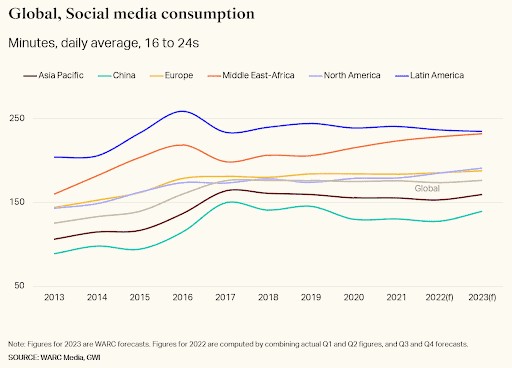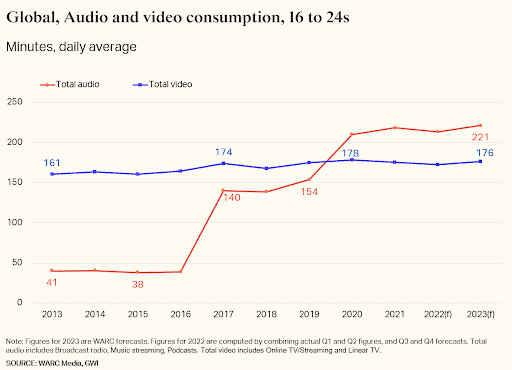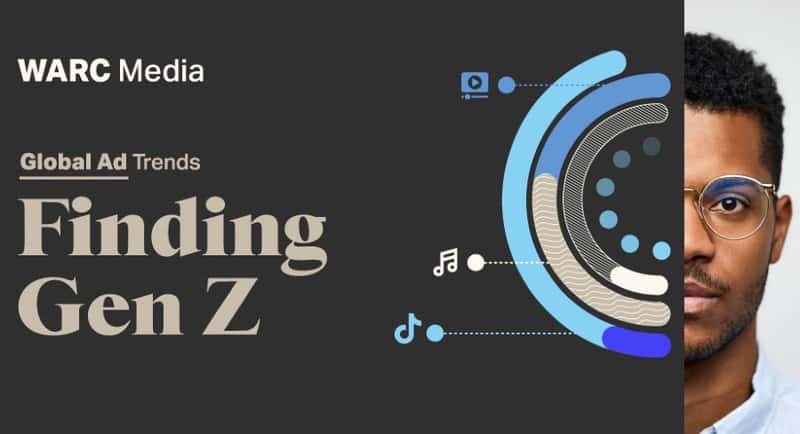WARC has released new data that has found that Generation Z is the most digital generation to date, spending two-thirds (67.7%) of total media time with digital channels, higher than any other age group.
Gen Z is commonly defined as those aged between 13 and 25, although WARC Global Ad Trends: Finding Gen Z focuses on consumers aged 16 or older. These individuals spend huge amounts of time with digital media.
However, in total consumption terms, Gen Z lags behind. Since 2018, 16-24s globally have consumed less media per day than 25-34s, and the gap is getting larger, with Millennial audiences consuming greater quantities of both linear and online streaming TV.

Social media leads consumption by 16-24s across all regions. Yet growth in total global social usage levelled off in 2017, and is even forecast to dip slightly (-0.5%) year-on-year in 2022, according to WARC’s data.
This means that platforms find themselves battling to win share of Gen Z’s finite attention, with any gains by newer platforms like TikTok or BeReal likely to be at the expense of other apps.

Reaching Gen Z audiences is a challenge
Increases in online media consumption by 16-24s have been driven by the creation of new media opportunities – such as music and podcast streaming – rather than digital innovations fully supplanting offline channels. Furthermore, these newer media environments are often those with the most under-developed advertising proposition.
This heightens the importance of platforms like TikTok. Nearly 40% of TikTok’s advertising audience is aged between 18 and 24, totalling 421.1 million (source: Kepios). With TikTok users spending an average of 95 minutes per day with the app (source: Sensor Tower), this makes it increasingly valuable for brands as a means of reaching Gen Z audiences.
Audio channels also play a key role in Gen Z media habits. Fuelled by music streaming and podcast listening, 16-24s globally consume more audio content per day than all forms of premium video viewing combined.

Alex Brownsell, head of content, WARC Media, and co-author of the report, said: “Age is clearly not the only consideration in determining consumer behaviour – factors like geography and affluence can be just as decisive.
“Yet our analysis of media consumption data shows that the year an individual was born can provide a useful indicator of likely channel and platform preferences, especially when it comes to younger cohorts.
Brownsell added: “Gen Z has been uniquely impacted by technological innovations. It was the first audience to navigate childhood and adolescence with social media; it has been exposed to audio streaming and video on-demand services from a young age. These trends have left an indelible mark on the generation’s media choices and the channels through which advertisers can reach consumers under the age of 25.”
